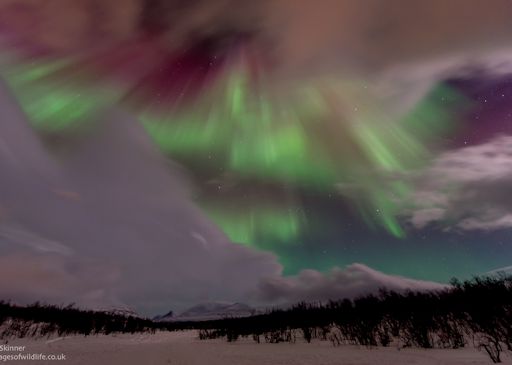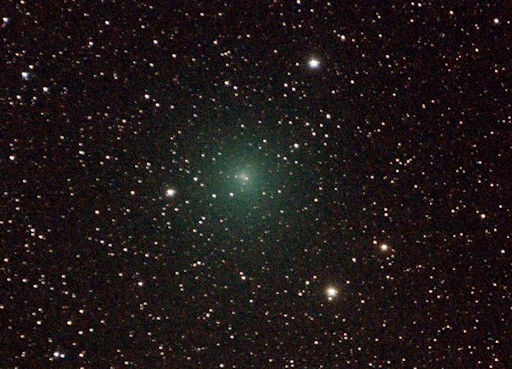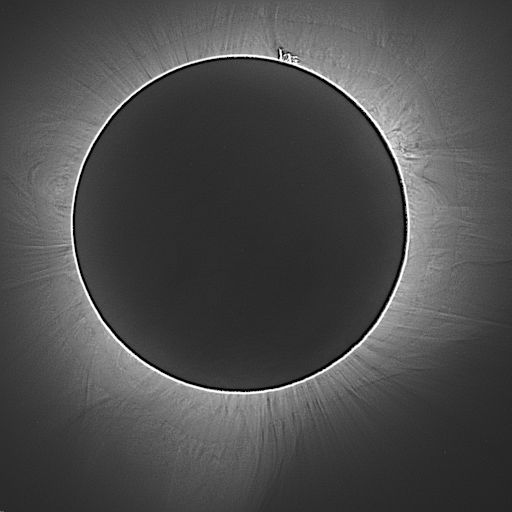Marianne's Heaven On Earth Aurora Chaser Tours Chasethelighttours.co.uk invites you to join them in their quest to find and photograph the Aurora Borealis. Experience the winter wonderland in the Tromsø Area. | | |
CIR HITS EARTH, SPARKS AURORAS: Pi Day ended with an explosion of color. During the late hours of March 14th (3.14), a co-rotating interaction region (CIR) hit Earth's magnetic field, sparking bright auroras around the Arctic Circle. Sarah Skinner photographed the display from Abisko, Sweden:

"After a rainy day, the clouds broke. Nothing could have prepared me for the colors I was then about to witness!!" says Skinner. "As the aurora developed the most intense reds I have ever seen appeared. Reds, purples, greens, so many colors; I could not believe what I was seeing."
CIRs are transition zones between slow- and fast-moving solar wind streams. Solar wind plasma piles up in these regions, producing density gradients and shock waves that tend to ignite auroras when they strike Earth's magnetic field.
The CIR has passed, but more lights are in the offing. Earth is moving into a stream of high-speed solar wind following behind the CIR. In response, NOAA forecasters say there is a 65% chance of polar geomagnetic storms on March 15th. Aurora alerts: text or voice
Realtime Aurora Photo Gallery
COMET BRIGHTENS AS IT APPROACHES EARTH: On March 21st, Comet 252P/LINEAR will make a close approach to Earth--only 0.036 AU (5.4 million km) away. This is the fifth closest cometary approach on record and, as a result, the normally dim comet could become an easy target for backyard telescopes. In fact, it is brightening much faster than expected: data. "Comet 252P/LINEAR has surpassed expectations and is now bordering on naked eye visibility for southern observers," reports Michael Mattiazzo of Swan Hill, Victoria, Australia, who took this picture on March 13th:

"Since March 7th, the comet has brightened about 0.5 magnitudes per day," continues Mattiazzo, "and now it is near 6th magnitude. The comet's atmosphere (coma) is expanding rapidly, too, from 10 arcminutes on March 7th to 35 arcminutes on March 14th. It may reach 1o across by March 21st."
This is a southern hemisphere event. At closest approach on March 21st, the brightening comet will speed through the constellations Triangulum Australis and Apus. Observers south of the equator can use this ephemeris to point their telescopes. In remote places with very dark skies, it is possible that no telescope will be required; naked eyes might suffice. Stay tuned for updates as the comet approaches.
Realtime Comet Photo Gallery
THE GHOSTLY CORONA, REVEALED: One of the great attractions of a total eclipse is the chance to see something usually invisible to the human eye: the sun's ghostly corona. Normally overwhelmed by the glare of the solar disk, the gossamer outer atmosphere of our star reveals itself only when the Moon intervenes. On March 9th in Indonesia, it revealed itself in richly-textured detail:

This remarkable picture was taken by a team of undergraduate researchers observing the total eclipse from Tanjung Pandan (Belitung Island). Matt Penn of the National Solar Observatory in Tucson, Arizona, explains:
"In preparation for the 2017 'Great American Eclipse,' and to train some undergraduates who will be in the path of that event, we sent 5 teams to Indonesia with help from NASA funding with the equipment we hope to use next year in the USA. The goal was to take white light coronal images at high cadence. This first-look image from one of the sites shows that we succeeded."
Studying the corona is important because it is a primary source of space weather. The solar wind emerges from the corona, as do coronal mass ejections (CMEs), which can spark strong geomagnetic storms when they hit Earth.
Spacecraft such as STEREO and SOHO are equipped with coronagraphs that block the sun's glare; but no man-made coronagraph is as good as the Moon. "The field of view of space coronagraphs does not include the lower regions of the corona, becase blocking the sun is difficult in the presence of spacecraft jitter," says Penn. "That's why we love solar eclipses."
"One of our science targets is the dynamics of the polar plumes above the north and south coronal holes," Penn continues. "There is evidence that in these denser regions there are periodic or quasi-periodic enhancements which propagate outward from the sun."
"The undergraduate students involved in this project are Sarah Kovac, Logan Jensen, Honor Hare and Myles McKay," says Penn."Their mentors are Bob Baer, Michael Pierce, Richard Gelderman and Don Walter. None of this team had ever seen a solar eclipse before, and none of the students had ever traveled outside the USA. Now they are returning with world-class observations of the solar corona. Congratulations!"
March 9th Solar Eclipse Photo Gallery
Realtime Spaceweather Photo Gallery
Every night, a network of
NASA all-sky cameras scans the skies above the United States for meteoritic fireballs. Automated software maintained by NASA's Meteoroid Environment Office calculates their orbits, velocity, penetration depth in Earth's atmosphere and many other characteristics. Daily results are presented here on Spaceweather.com.
On Mar. 15, 2016, the network reported 18 fireballs.
(18 sporadics)

In this diagram of the inner solar system, all of the fireball orbits intersect at a single point--Earth. The orbits are color-coded by velocity, from slow (red) to fast (blue). [Larger image] [movies]
Potentially Hazardous Asteroids (
PHAs) are space rocks larger than approximately 100m that can come closer to Earth than 0.05 AU. None of the known PHAs is on a collision course with our planet, although astronomers are finding
new ones all the time.
On March 15, 2016 there were potentially hazardous asteroids.
 |
Notes: LD means "Lunar Distance." 1 LD = 384,401 km, the distance between Earth and the Moon. 1 LD also equals 0.00256 AU. MAG is the visual magnitude of the asteroid on the date of closest approach. | | Cosmic Rays in the Atmosphere |
| Situation Report -- Oct. 30, 2015 | Stratospheric Radiation (+37o N) |
| Cosmic ray levels are elevated (+6.1% above the Space Age median). The trend is flat. Cosmic ray levels have increased +0% in the past month. |
| Sept. 06: 4.14 uSv/hr (414 uRad/hr) |
| Sept. 12: 4.09 uSv/hr (409 uRad/hr) |
| Sept. 23: 4.12 uSv/hr (412 uRad/hr) |
| Sept. 25: 4.16 uSv/hr (416 uRad/hr) |
| Sept. 27: 4.13 uSv/hr (413 uRad/hr) |
| Oct. 11: 4.02 uSv/hr (402 uRad/hr) |
| Oct. 22: 4.11 uSv/hr (411 uRad/hr) |
These measurements are based on regular space weather balloon flights: learn more. Approximately once a week, Spaceweather.com and the students of Earth to Sky Calculus fly "space weather balloons" to the stratosphere over California. These balloons are equipped with radiation sensors that detect cosmic rays, a surprisingly "down to Earth" form of space weather. Cosmic rays can seed clouds, trigger lightning, and penetrate commercial airplanes. Our measurements show that someone flying back and forth across the continental USA, just once, can absorb as much ionizing radiation as 2 to 5 dental X-rays. For example, here is the data from a flight on Oct. 22, 2015:

Radiation levels peak at the entrance to the stratosphere in a broad region called the "Pfotzer Maximum." This peak is named after physicist George Pfotzer who discovered it using balloons and Geiger tubes in the 1930s. Radiation levels there are more than 80x sea level.
Note that the bottom of the Pfotzer Maximim is near 55,000 ft. This means that some high-flying aircraft are not far from the zone of maximum radiation. Indeed, according to the Oct 22th measurements, a plane flying at 45,000 feet is exposed to 2.79 uSv/hr. At that rate, a passenger would absorb about one dental X-ray's worth of radiation in about 5 hours.
The radiation sensors onboard our helium balloons detect X-rays and gamma-rays in the energy range 10 keV to 20 MeV. These energies span the range of medical X-ray machines and airport security scanners.
| | The official U.S. government space weather bureau |
| | The first place to look for information about sundogs, pillars, rainbows and related phenomena. |
| | Researchers call it a "Hubble for the sun." SDO is the most advanced solar observatory ever. |
| | 3D views of the sun from NASA's Solar and Terrestrial Relations Observatory |
| | Realtime and archival images of the Sun from SOHO. |
| | from the NOAA Space Environment Center |
| | the underlying science of space weather |

